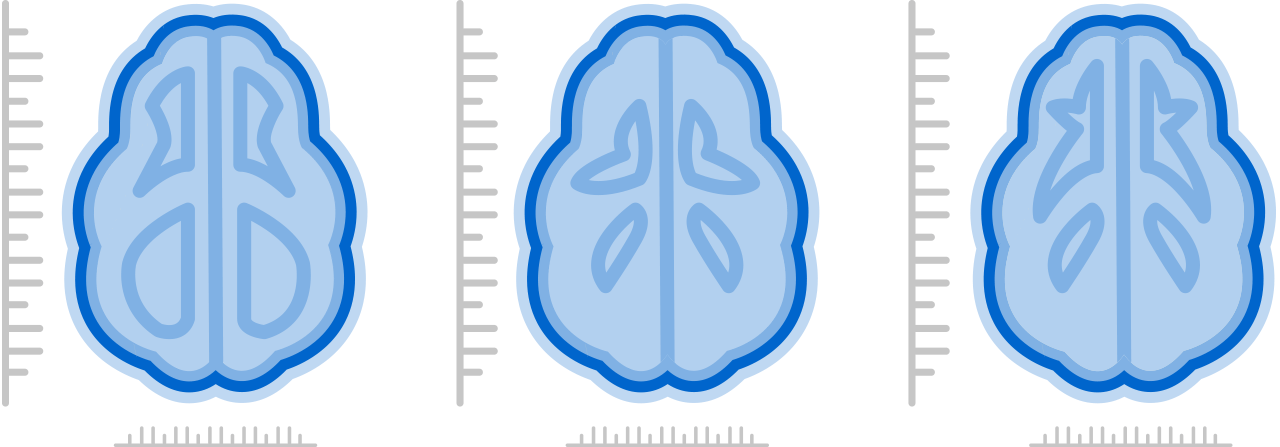Forms of multiple sclerosis: What are the similarities and differences?
Multiple sclerosis (MS) is a disease of the central nervous system (CNS), which includes the brain, spinal cord and optic nerves. The underlying biology is similar for everyone, but its course and symptoms vary from person to person. The majority of people with MS initially have a relapsing-remitting or primary progressive form of MS identified at diagnosis. Explore the similarities and differences between these two forms of MS.
How are the forms of MS similar?

Underlying biology
In every form of MS, the immune system attacks nerve cells in the CNS, which can cause symptoms and disability.

Disease course
Both RRMS and PPMS are marked by worsening signs or symptoms at some point during the course of the disease.

Symptoms
Symptoms are similar across all forms of MS, but differ for each person, no matter which form.
Most people with RRMS and PPMS experience an increase in physical disability at some point in time.

Diagnosis
Both man and woman can be diagnosed with RRMS and PPMS.

Disease activity
Disease activity may be outwardly apparent with new or worsening signs or symptoms, or underlying, such as lesions (inflamed or damaged areas of the central nervous system) that are detected with special equipment like magnetic resonance imaging (MRI).10

Treatment goal
An important goal of treating RRMS and PPMS is to slow the progression of disability as early as possible.
How are the forms of MS different?
Forms of MS at diagnosis
Course of the disease
Symptoms
Age at diagnosis
Ratio of men and women diagnosed
Disease activity
Unment clinical need
Trouble with the Social Network
References
National Multiple Sclerosis Society. Types of MS. Available at http://www.nationalmssociety.org/What-is-MS/Types-of-MS.Accessed June 2017.
Lublin F.D., Reingold S.C. (1996) Defining the clinical course of multiple sclerosis: results of an international survey. National Multiple Sclerosis Society (USA) Advisory Committee on Clinical Trials of New Agents in Multiple Sclerosis. Neurology, 46(4):907–11.
Lublin F.D. et al. (2014). Defining the clinical course of multiple sclerosis. Neurology, 83(3):278-86.
MS Society. Primary Progressive (PPMS). Available at https://www.mssociety.org.uk/what-is-ms/types-of-ms/primary-progressive-ppms.Accessed June 2017.
Holland NJ, Schneider DM, Rapp R, Kalb RC. Meeting the Needs of People with Primary Progressive Multiple Sclerosis, Their Families, and the Health-Care Community. International Journal of MS Care. 2011;13(2):65-74.
Planche V., Gibelin M., Cregut D., Pereira B., Clavelou P. Cognitive impairment in a population-based study of patients with multiple sclerosis: differences between late relapsing-remitting, secondary progressive and primary progressive multiple sclerosis. Eur J Neurol. 2016;23(2):282-289.
Kobelt, Gisela, et al. (2017). New insights into the burden and costs of multiple sclerosis in Europe. Multiple Sclerosis Journal, 23(8):1123–1136. Available at: http://journals.sagepub.com/doi/pdf/10.1177/1352458517694432.
Multiple Sclerosis International Federation. What is MS? Available at http://www.msif.org/about-ms/what-is-ms/. Accessed June 2017.
Multiple Sclerosis International Federation. (2013). Atlas of MS 2013. Available at: http://www.msif.org/about-us/advocacy/atlas/. Accessed June 2017.
Erbayat A, et al. (2013). Reliability of classifying multiple sclerosis disease activity using magnetic resonance imaging in a multiple sclerosis clinic. JAMA Neurol, 70(3):338-44.














:quality(90)/)
:quality(90)/)